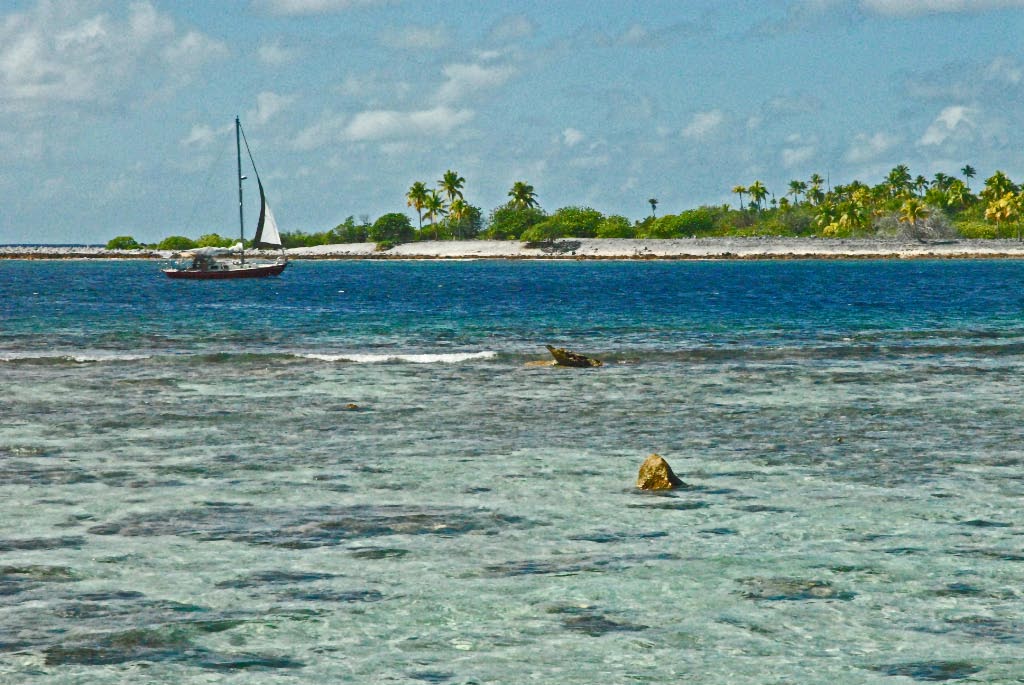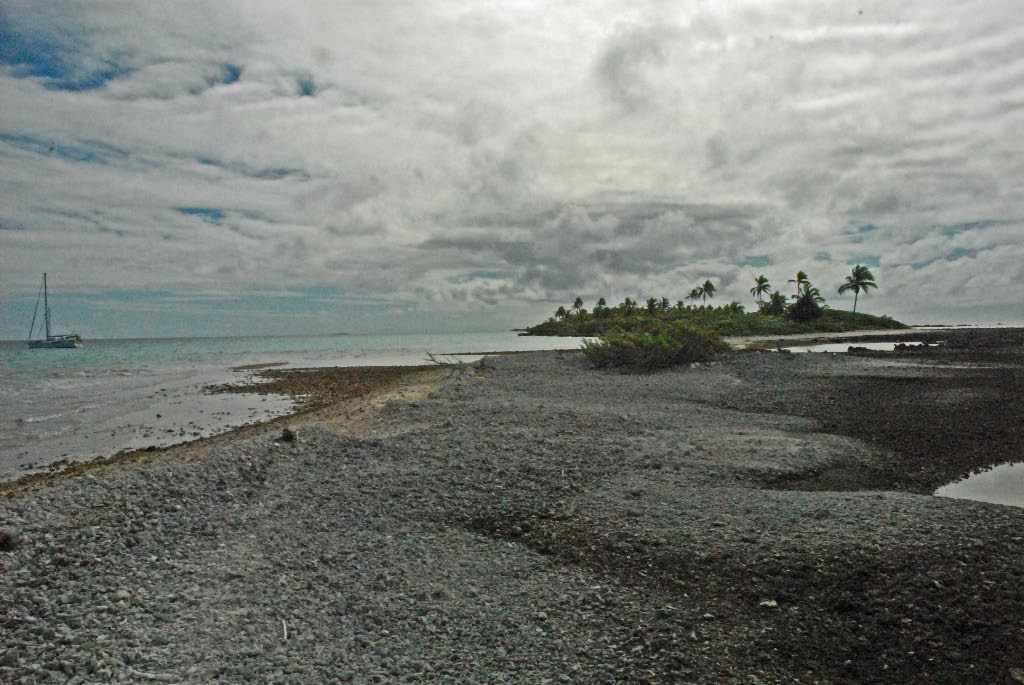We’re still anchored in the atoll of Tahanea in the Tuamotus archipelago of French Polynesia. The ugly weather system that made our entrance here so eventful has mostly moved past. We had a lovely day yesterday and went ashore to explore and did a little snorkel on a reef inside the lagoon.

The atolls here are incredibly interesting. They began as deep underwater bulges over magma that grew until they broke the ocean surface and erupted as volcanoes. When the eruptions eventually stopped, erosion from the wind and rain created soil for plants, and coral polyps grew on the rocks on the periphery of the islands creating coral reefs. Eventually the islands eroded completely away, leaving behind only little patches of land and the ring of coral as a reef around a lagoon. The coral growth is most prolific on the windward side where the current is stronger, which can be seen in many atolls where the reef and motus (little islands) are bigger on the north and east sides. The gaps and passes into the lagoon that we use were created by fresh water streams flowing down the sides of the volcano, which prevented the buildup of the coral polyps and reefs.
Anchoring inside the lagoon is like being anchored in an aquarium. Marine life that is not sustainable in the deep waters of the ocean live in the lagoons. Tropical fish are abundant, as are colorful coral heads. Navigation inside the lagoons is tricky, though, as the coral heads rise to the surface in patches throughout the uncharted lagoon.
And while the tropical fish are lovely to look at, ciguatera poisoning is a serious problem in many of the atolls. Ciguatera is a toxin caused by a microscopic organism which grows on marina algae and is eaten by the reef fish. The fish aren’t affected by the toxin, which accumulates and is passed on to fish that eat them all the way up the food chain. The pelagic deep sea fish we catch are not affected, but the reef fish in the lagoon are. The only way to be sure if the fish are safe is to ask the locals. On Makemo we enjoyed some delicious grouper caught by a yachtie and shared at a barbeque potluck. Here on Tahanea there are no inhabitants who would know about ciguatera, so all fishing is off limits in the lagoon.

That’s not going to stop us from trying to catch some lobster. We’re going night diving tonight on a little reef inside the atoll and hope to bag a few of the little crustaceans. A bunch of folks went out on the reef in an inter-tidal zone earlier in the week at low tide after dark one night and everyone came home with lobster. They come out to feed at night and are apparently stunned by bright lights at night and relatively easy to catch. We’ll see how we do.
Tomorrow we’ll move over to the southern pass here in Tahanea and decide if we can do a pass dive. The main pass doesn’t look as interesting as the southern one, so we’ll see how it looks. Then we’ll head north to Fakarava, another atoll 50 miles north. If we leave at daybreak and have decent wind we should be able to easily make the 50 miles and arrive at the southern pass at Fakarava with enough daylight to navigate the tricky entrance into the lagoon. There are many reefs inside the pass that we have to work around to get to the anchorage so we need relatively good light.
Teresa